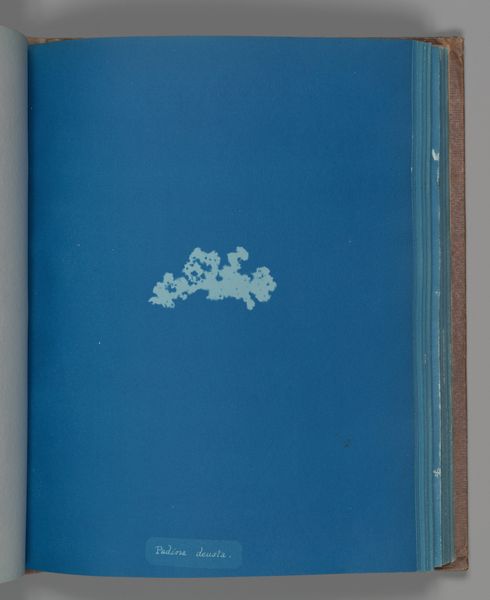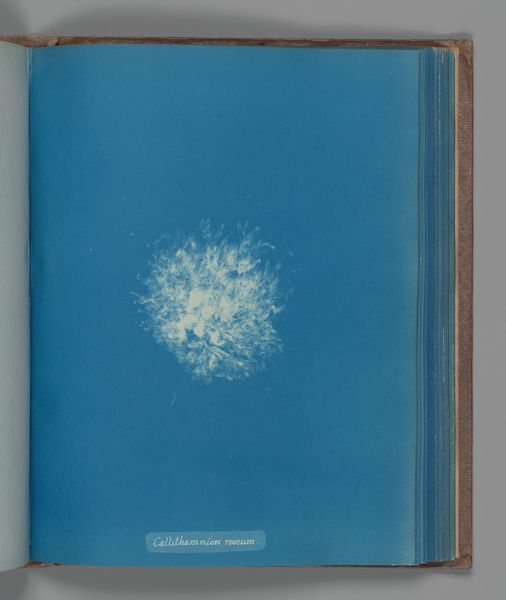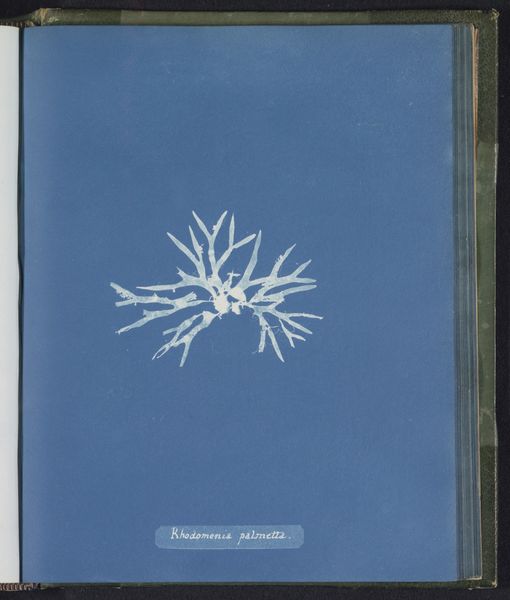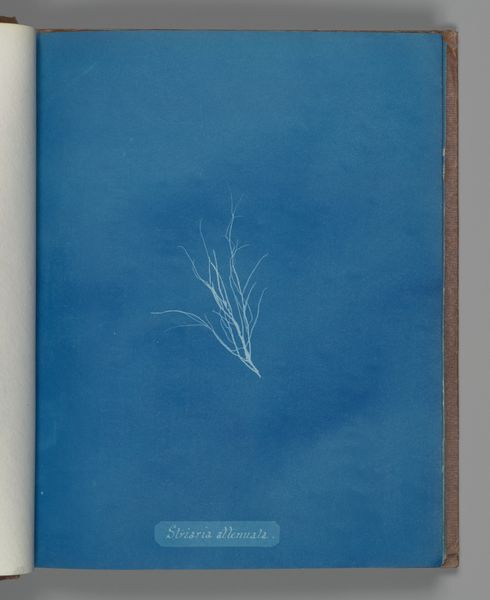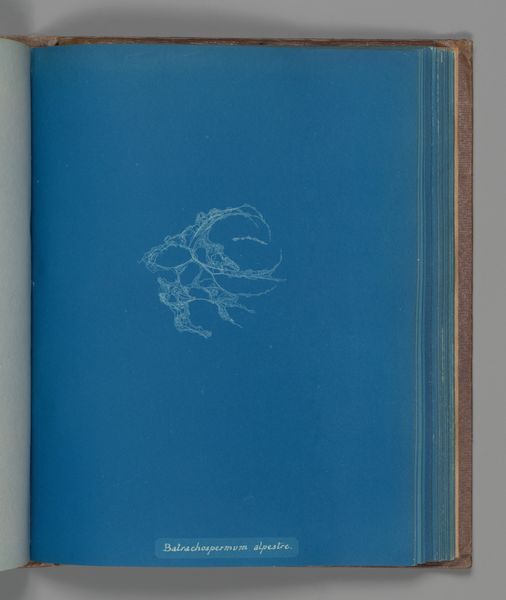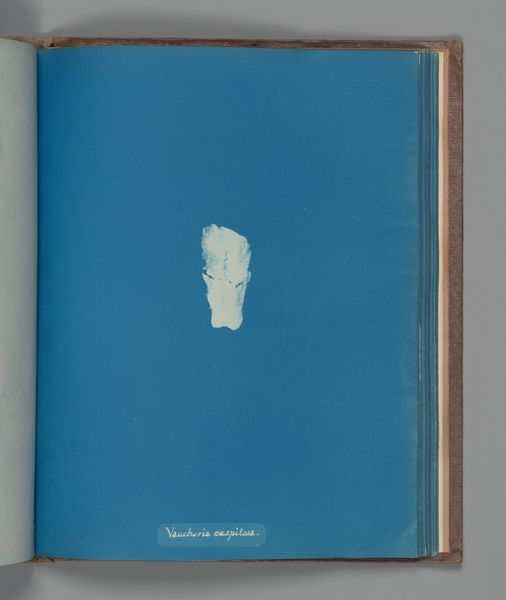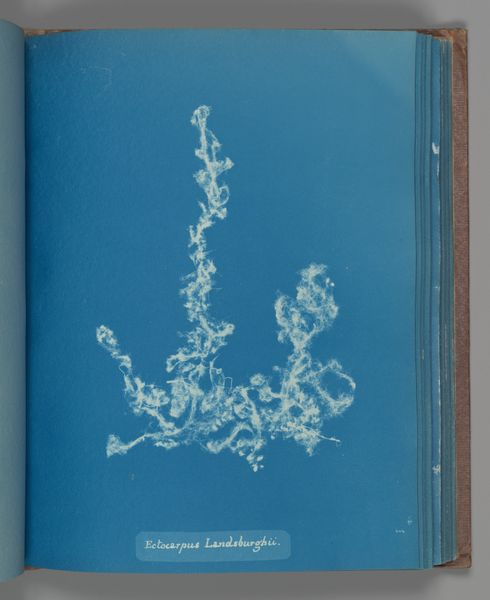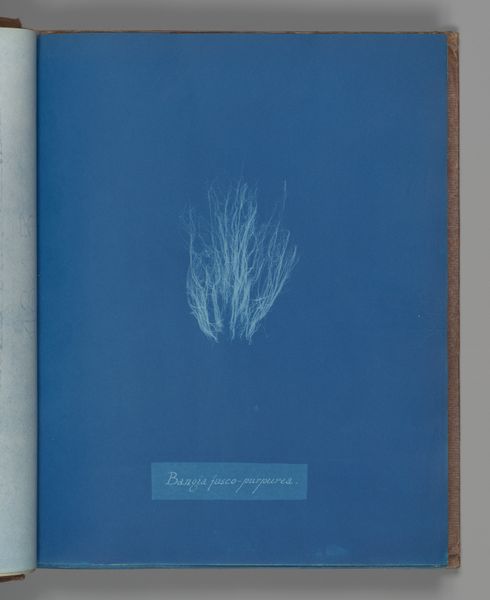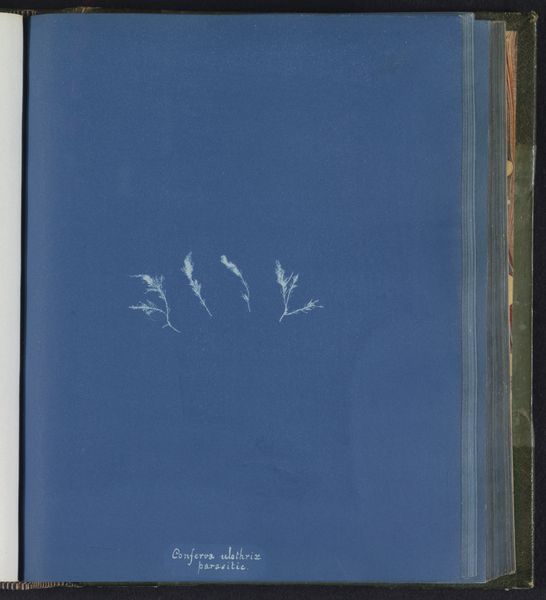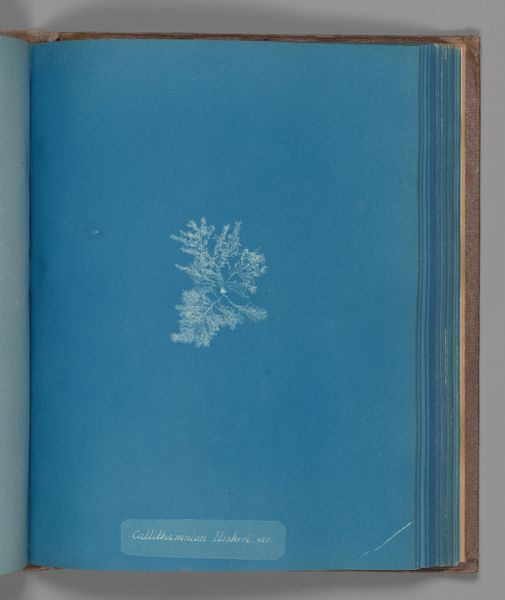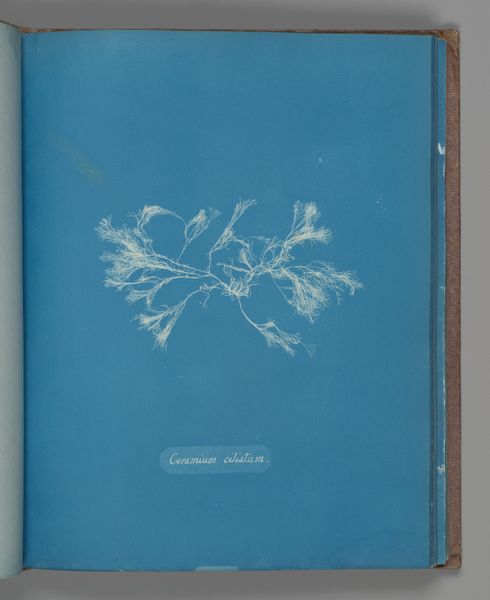
print, cyanotype, photography
#
still-life-photography
# print
#
cyanotype
#
photography
#
academic-art
Dimensions: Image: 25.3 x 20 cm (9 15/16 x 7 7/8 in.)
Copyright: Public Domain
Curator: Welcome. Before us is Anna Atkins’s "Sphacelaria cirrhosa," a cyanotype from a series created between 1851 and 1855, now residing here at the Metropolitan Museum of Art. Editor: Cobalt dreams! It’s so blue. Almost like a celestial fingerprint left behind on a star map. Airy too—that single sprig looks so delicately suspended in all that blue. Curator: Indeed. Atkins, a British botanist and photographer, is regarded as one of the first women photographers. What’s fascinating is that this image comes from her publication, "Photographs of British Algae: Cyanotype Impressions," considered the first book illustrated with photographic images. Editor: "Photographs of British Algae..." rolls off the tongue like seaweed in a saltwater taffy shop. I love it. The directness of the cyanotype process—using light to reveal form—echoes how scientists reveal nature’s hidden structures. Curator: Precisely. This print demonstrates her fusion of scientific observation and artistic expression. Think about it: photography was still relatively new then, but Atkins quickly harnessed its power for documenting botanical specimens with accuracy and distributing this knowledge to the wider scientific community. The series advanced photography in academic settings, in a time when art and science rarely converged in practice. Editor: Absolutely, yet this work is also about framing—presenting raw, biological reality as a curated image, not completely unalike what we do in our studio practice. The starkness, and bold simplicity of this process turns simple algae into something profoundly ethereal—there’s something hauntingly beautiful about her commitment to rendering specimens with light and shadow alone. Like the algae are ghosts, haunting the azure page. Curator: A beautiful analogy. Looking back, one recognizes that Atkins created a powerful intersection where the personal study and artistic interpretation collide to show scientific work can be of political importance. Her work opened up new forms of expression by turning the natural world into accessible scientific work at all. Editor: The cyanotype is so tactile and ghostly; that sprig lives beyond documentation. Each image, a delicate ghost print on that endless blue, offers new paths and perspective. It has been truly wonderful to visit Atkin's artwork with you.
Comments
No comments
Be the first to comment and join the conversation on the ultimate creative platform.
